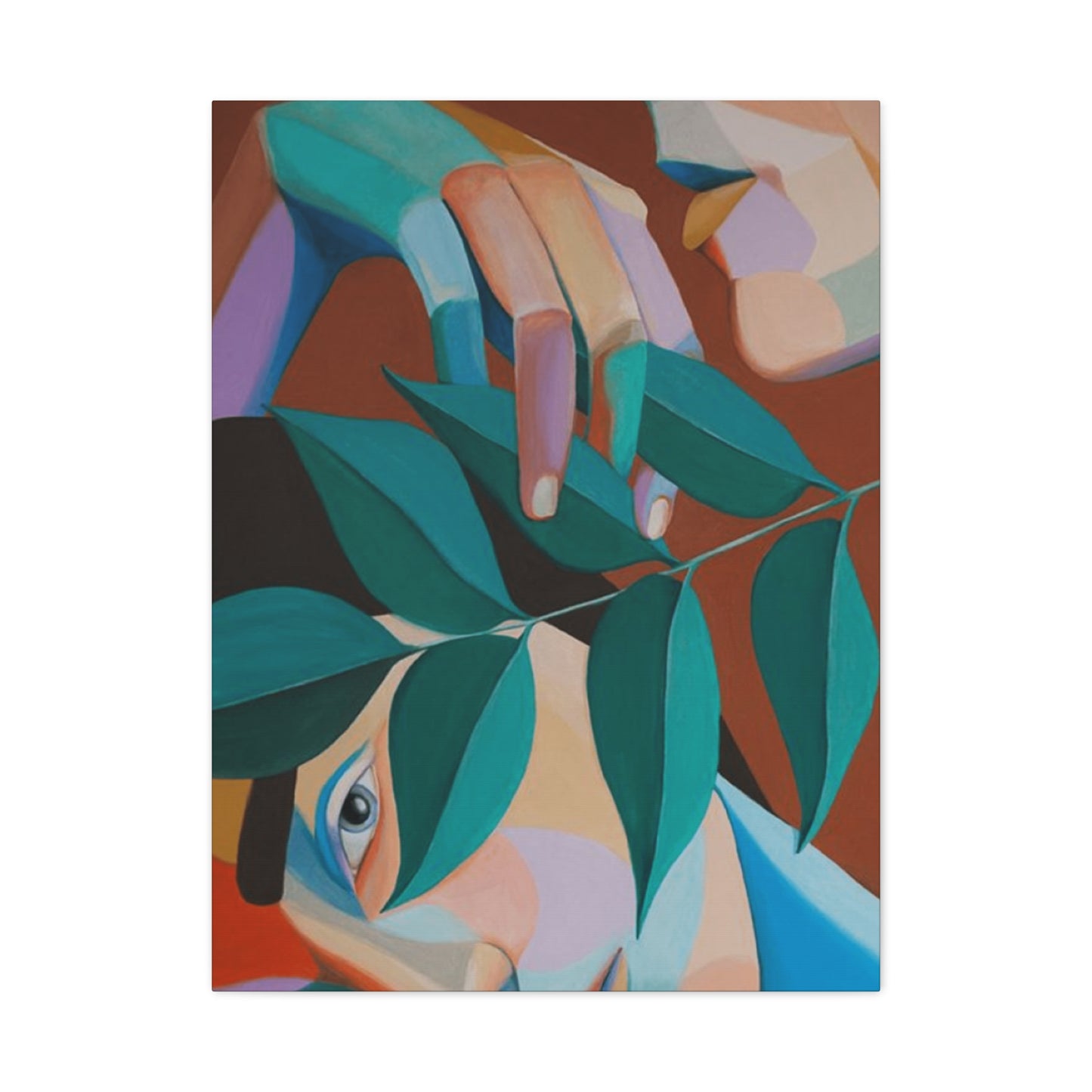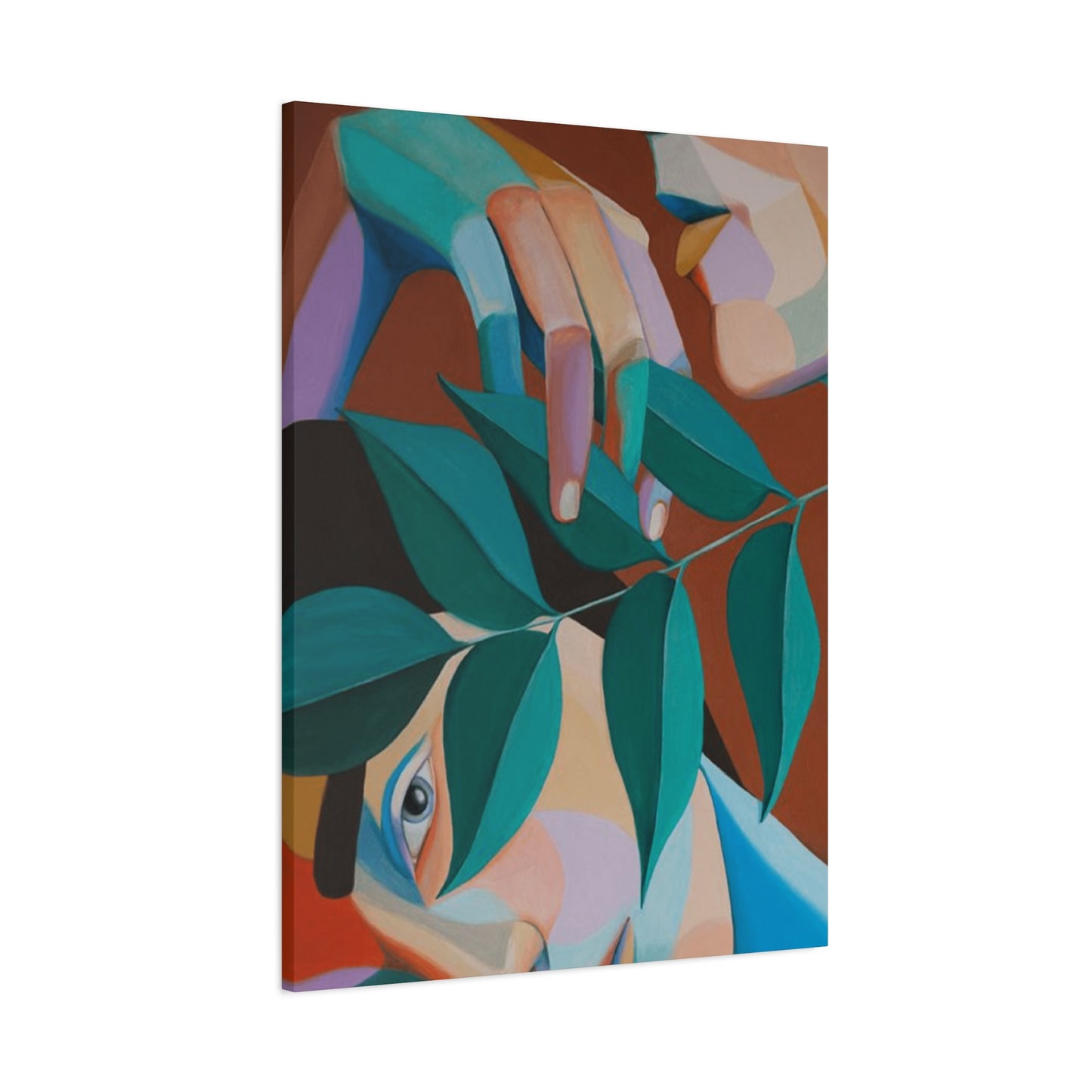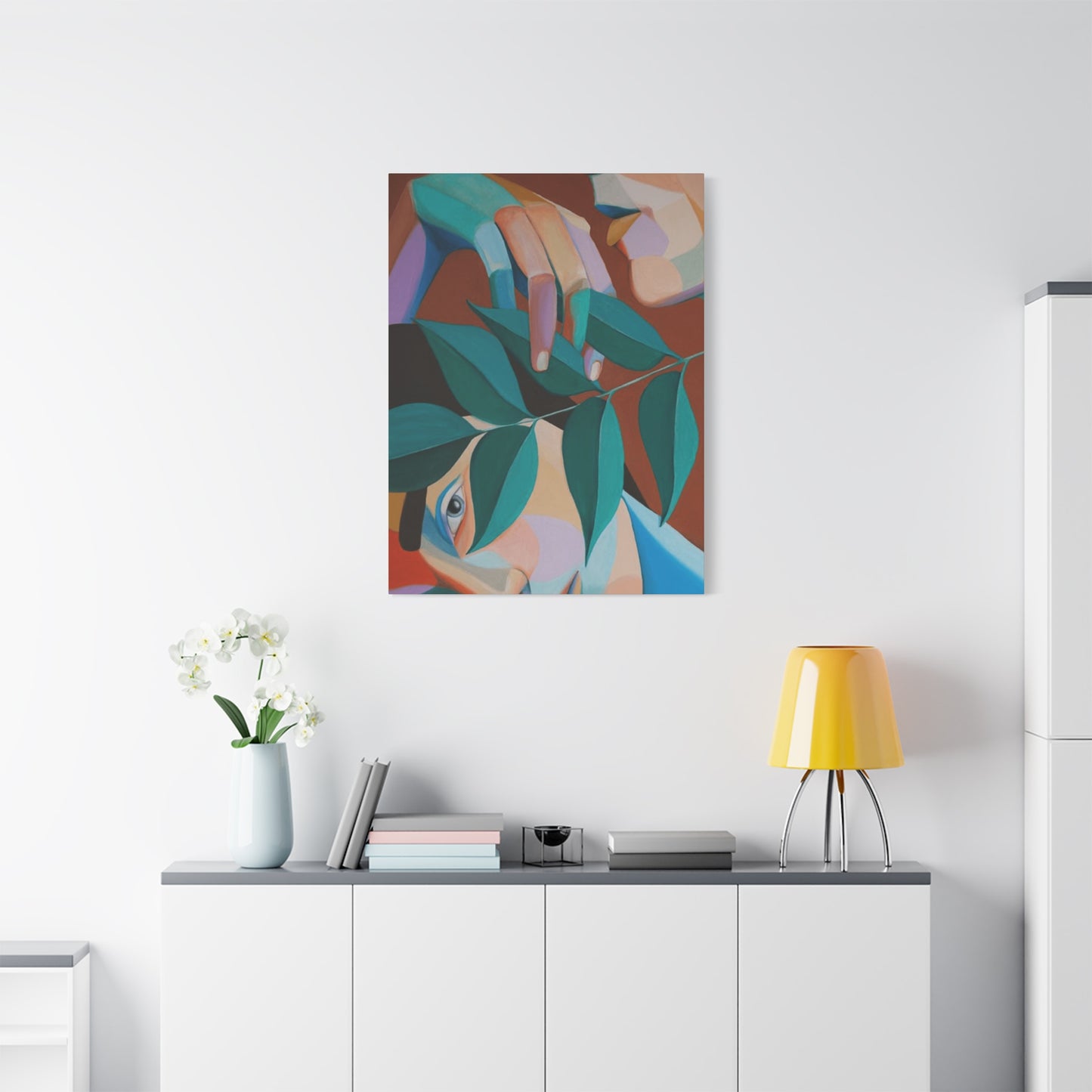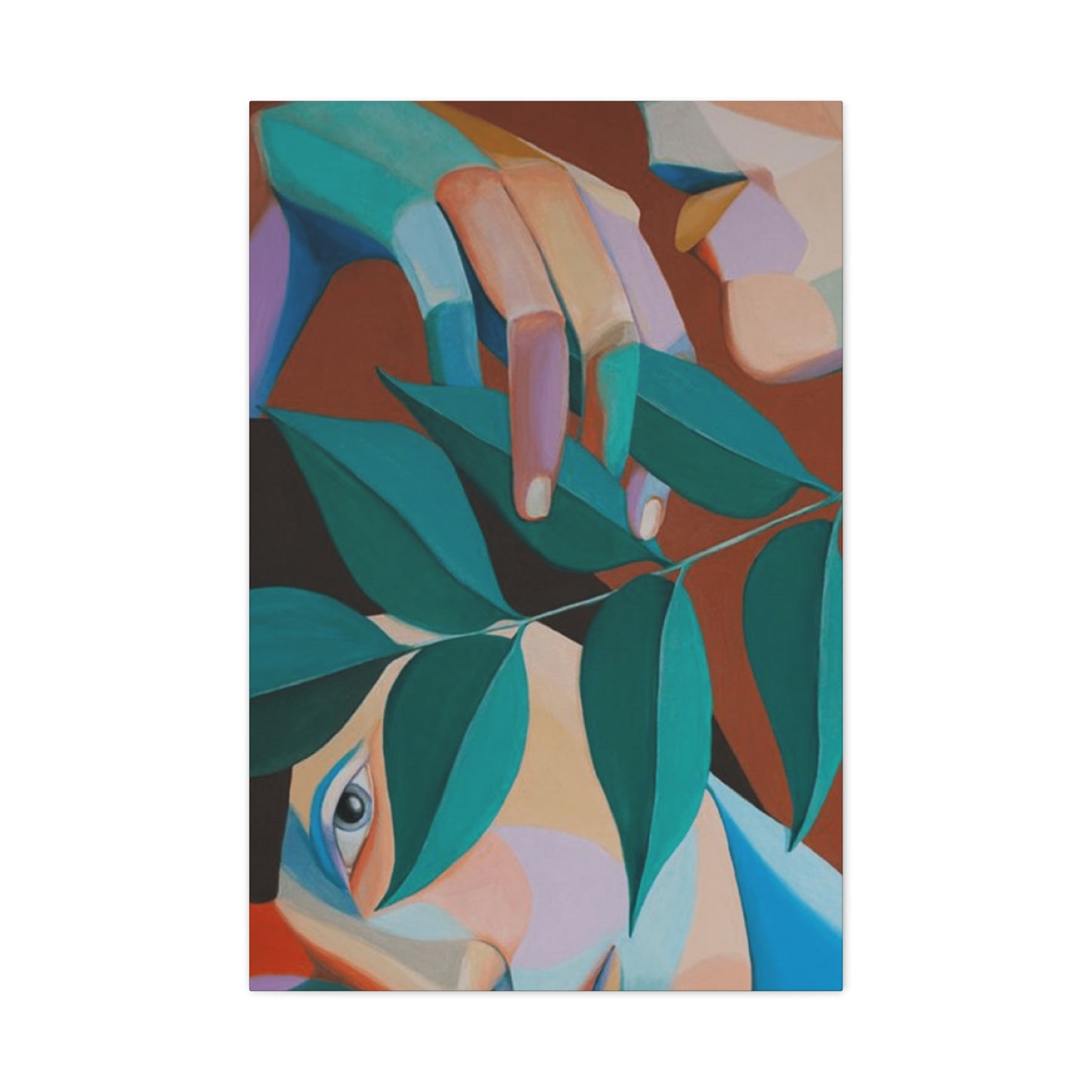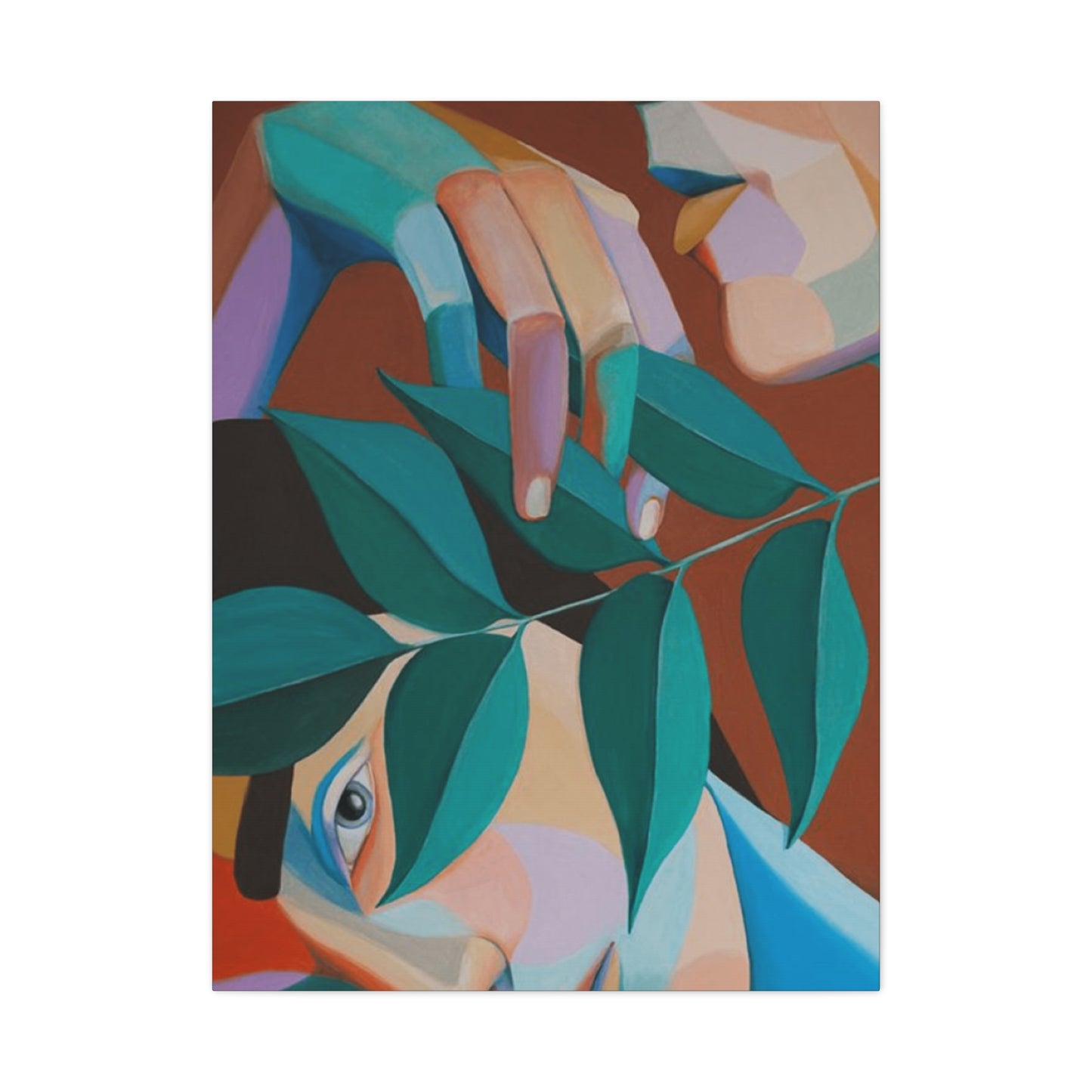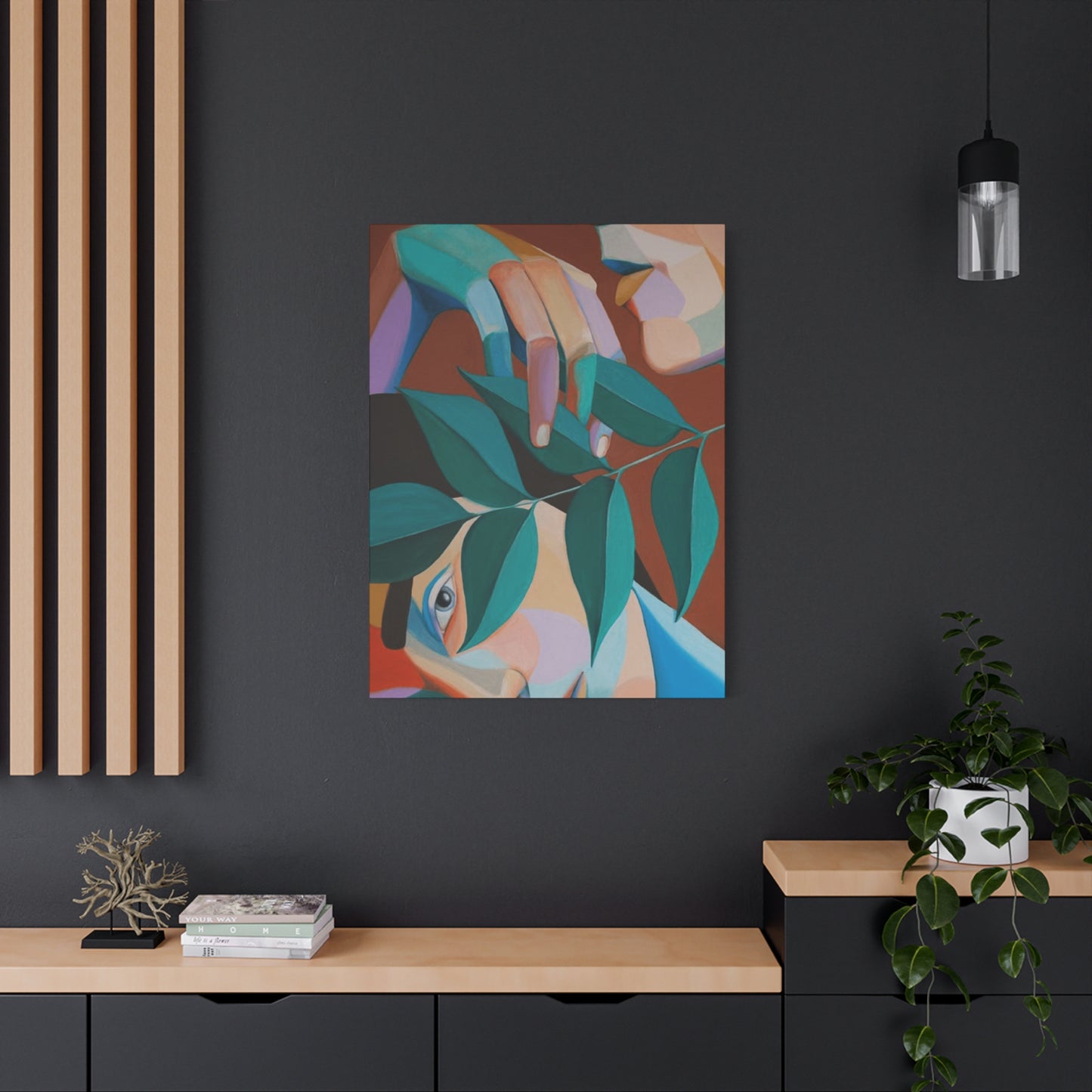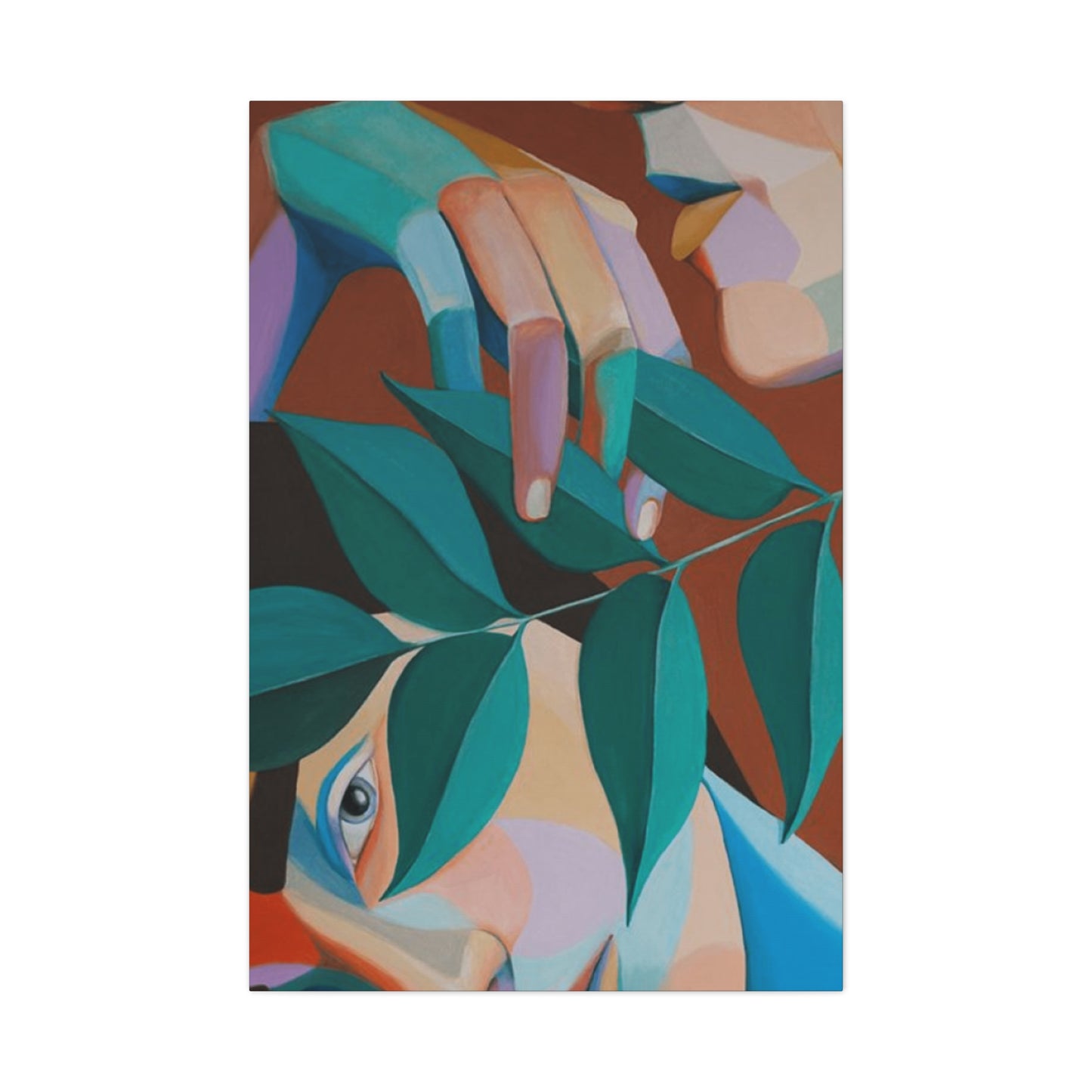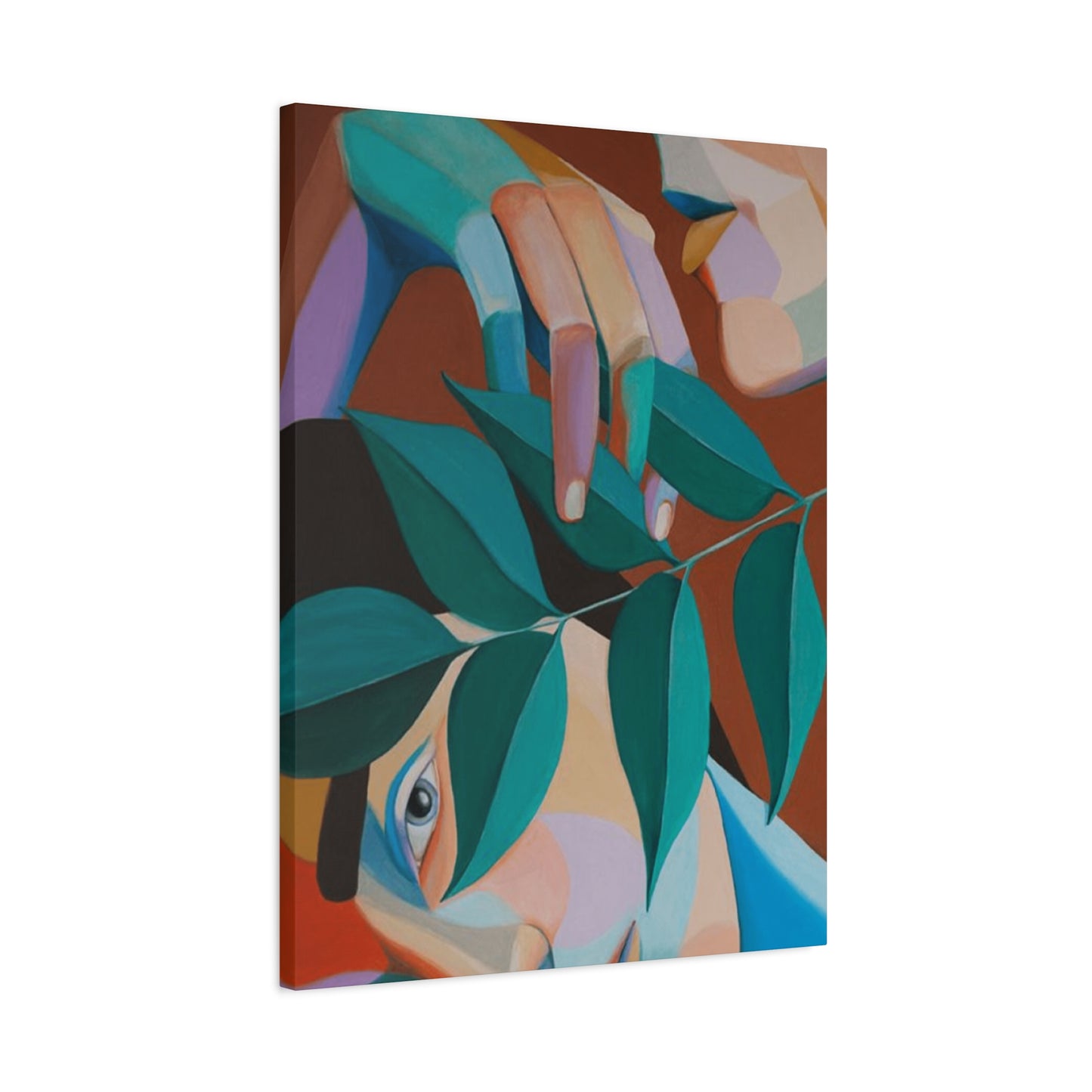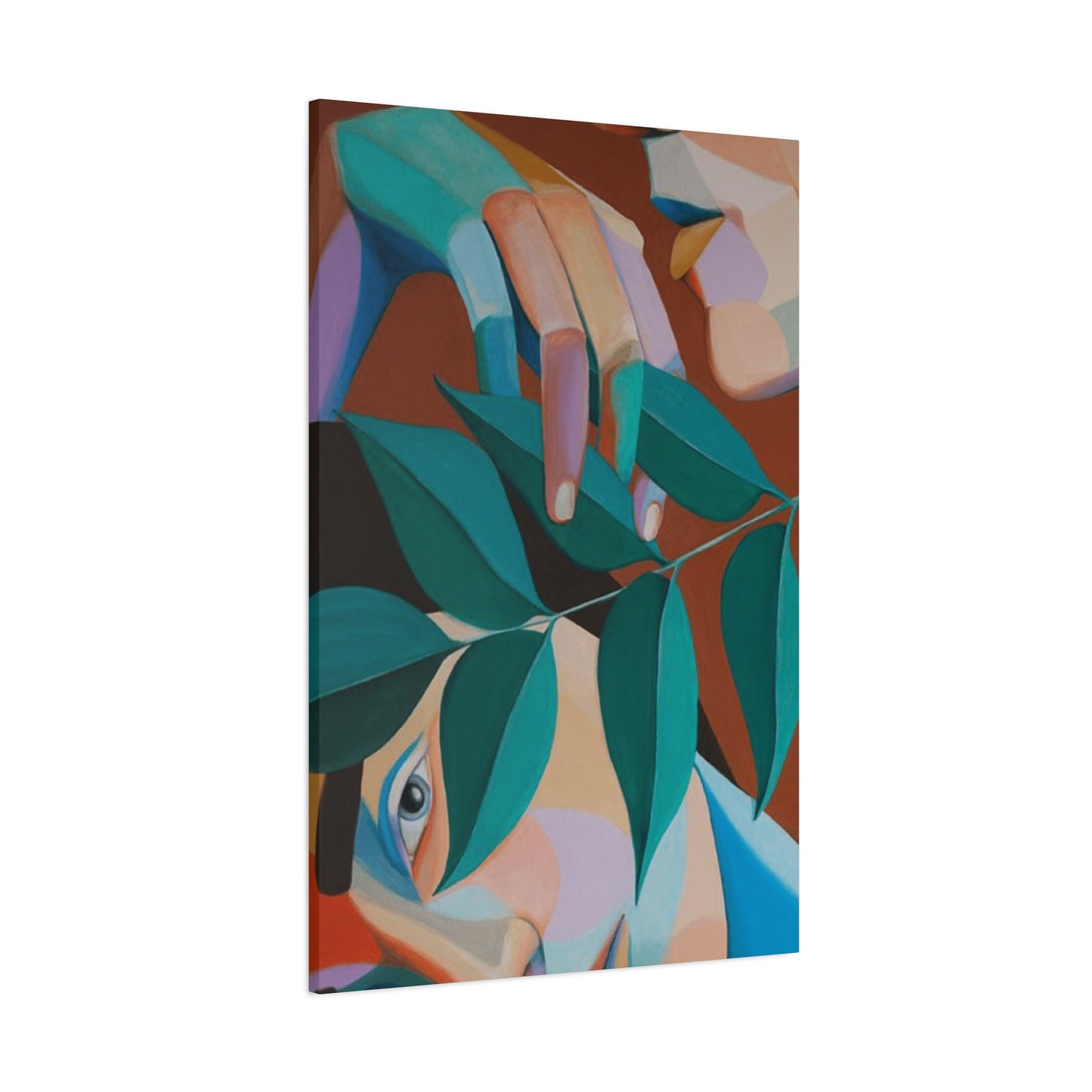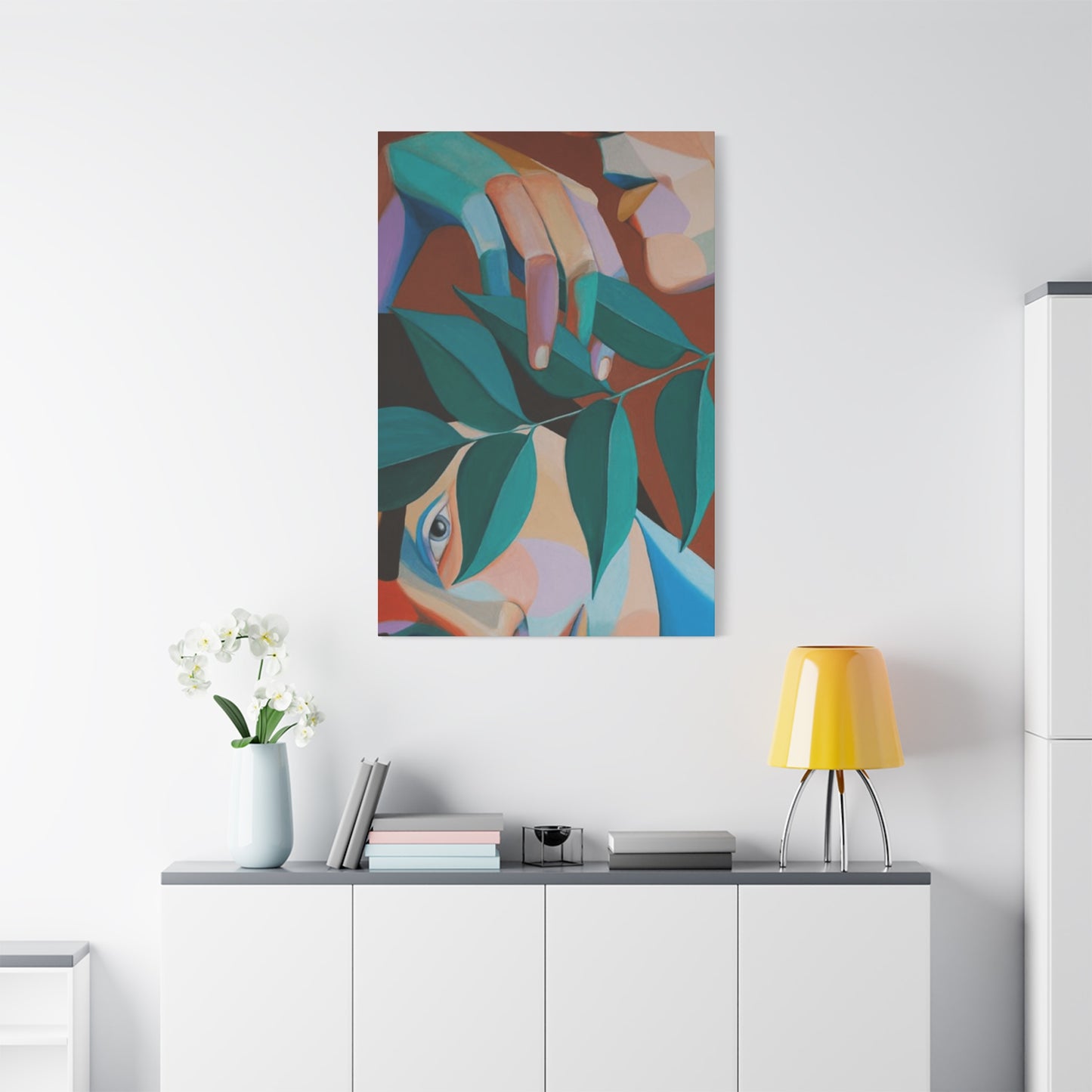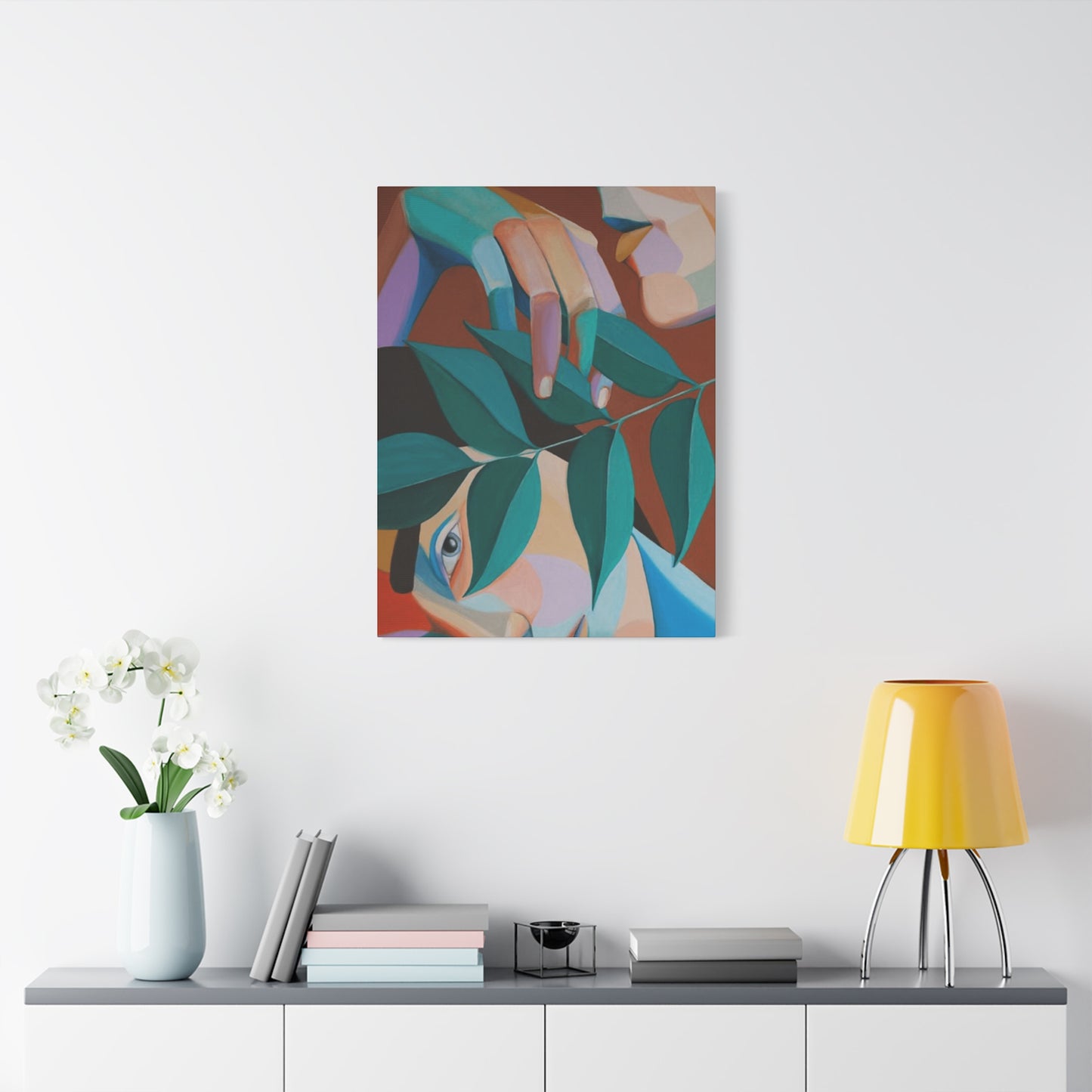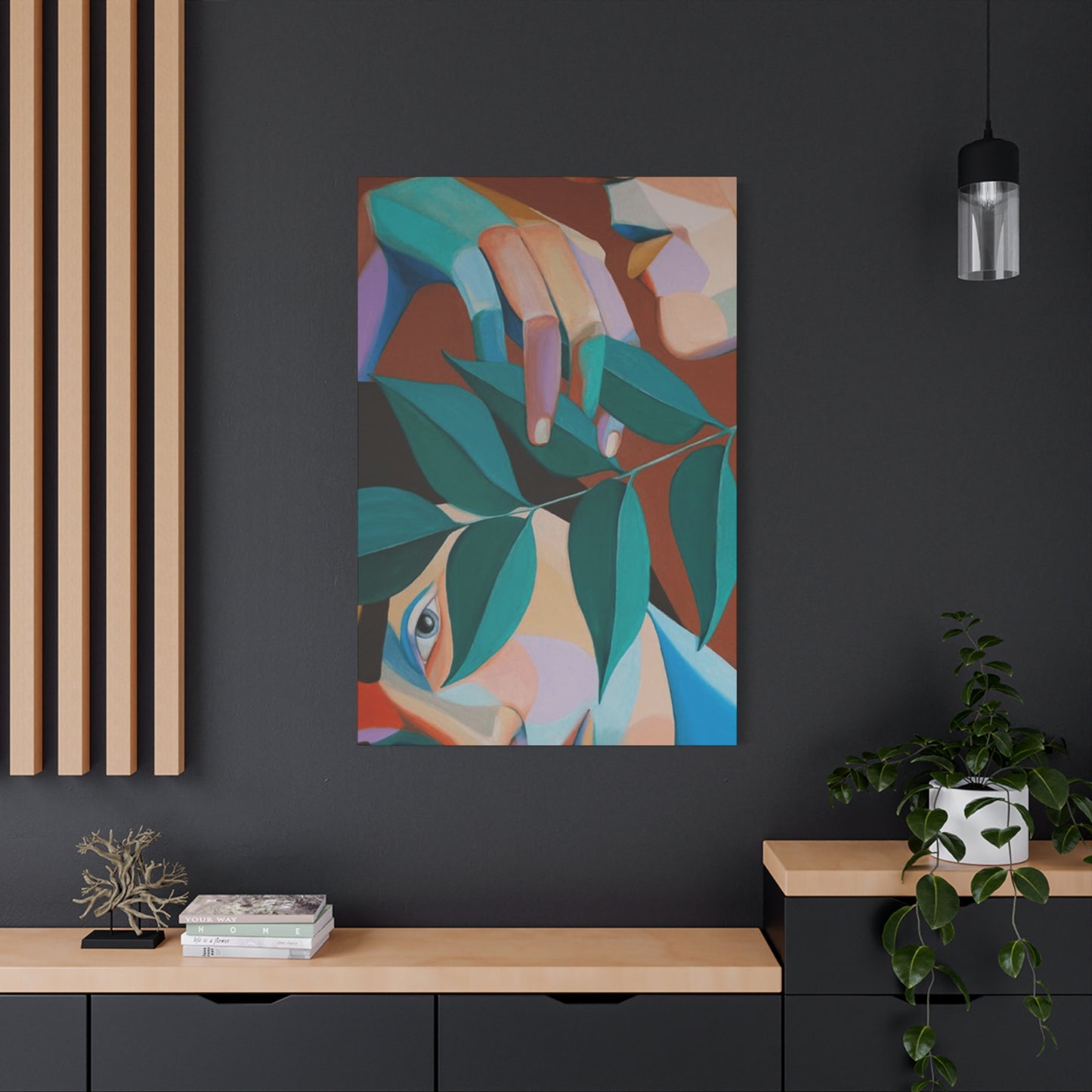Feminine Beauty in Modern Interior Design: Exploring Abstract Women Wall Art
The world of interior decoration has witnessed a remarkable shift in how feminine beauty and strength are portrayed through abstract wall art. Canvas prints featuring women in abstract forms have become a powerful medium for expressing individuality, emotions, and contemporary aesthetics. This artistic movement celebrates the multifaceted nature of femininity through bold colors, fluid lines, and imaginative compositions that transcend traditional portraiture. Abstract representations of women on canvas have evolved from simple silhouettes to complex artistic interpretations that capture the essence of modern womanhood.
The journey of women abstract wall art canvas prints began as artists sought to break free from conventional representations. Instead of focusing solely on realistic depictions, contemporary creators embraced abstraction to convey deeper meanings and emotional resonances. These artworks utilize geometric shapes, flowing curves, and unconventional color palettes to represent feminine energy, grace, and power. The abstract approach allows viewers to connect with the artwork on a personal level, finding their own interpretations and emotional responses within the composition.
Throughout history, the representation of women in art has undergone countless transformations. From classical sculptures to renaissance paintings, each era brought its unique perspective. However, the abstract movement introduced a revolutionary approach that prioritized emotion and concept over literal representation. This shift enabled artists to explore themes of femininity, identity, and empowerment in ways that were previously impossible. Canvas prints featuring abstract women have become symbols of this artistic liberation, offering viewers the opportunity to display thought-provoking and visually stunning pieces in their living spaces.
The appeal of these canvas prints extends beyond mere decoration. They serve as conversation starters, mood enhancers, and reflections of personal taste. Whether displayed in living rooms, bedrooms, offices, or creative spaces, abstract feminine artwork adds sophistication and character to any environment. The versatility of these pieces allows them to complement various interior design styles, from minimalist and modern to eclectic and bohemian. Each artwork tells a story, invites contemplation, and brings a unique energy to the space it inhabits.
Psychological Impact of Feminine Abstract Artwork in Living Spaces
The presence of women abstract wall art canvas prints in residential and commercial environments has been shown to influence mood, creativity, and overall wellbeing significantly. Colors, shapes, and compositions work together to create psychological effects that can either energize or calm the viewer. Understanding these impacts helps individuals make informed decisions when selecting artwork for their spaces. The psychological connection between art and human emotion is profound, particularly when the subject matter resonates with personal experiences or aspirations.
Abstract artwork featuring feminine themes often employs soft curves and flowing lines that evoke feelings of comfort and safety. These organic shapes mirror natural forms found in nature, triggering subconscious associations with growth, nurturing, and life itself. When incorporated into living spaces, such artwork can create an atmosphere of tranquility and balance. The brain processes these visual elements as non-threatening and harmonious, which can reduce stress levels and promote relaxation after long, demanding days.
Color psychology plays an equally important role in how abstract feminine canvas prints affect viewers. Warm tones like coral, terracotta, and blush pink can create welcoming, intimate atmospheres that encourage social interaction and emotional connection. These hues are often associated with femininity, compassion, and warmth, making them ideal choices for spaces where people gather and connect. Cooler tones such as teal, navy, and lavender introduce sophistication and contemplation, perfect for personal retreats or creative workspaces where focus and inspiration are desired.
The abstract nature of these artworks allows viewers to project their own experiences and emotions onto the piece. This personal interpretation creates a unique bond between the observer and the artwork, making the piece feel specially meaningful. Unlike literal representations that dictate a specific narrative, abstract compositions invite ongoing discovery and changing interpretations based on the viewer's current emotional state. This dynamic relationship between art and observer adds layers of value to the investment in canvas prints.
Research in environmental psychology has demonstrated that carefully chosen artwork can improve cognitive function and creative thinking. Spaces adorned with abstract feminine art encourage lateral thinking and innovative problem-solving by presenting visual puzzles that the mind naturally seeks to understand. This mental stimulation keeps the brain engaged and active, potentially enhancing productivity in work environments and enriching leisure time in residential settings. The presence of meaningful art transforms ordinary spaces into environments that nurture both emotional and intellectual growth.
Contemporary Artistic Techniques in Creating Abstract Feminine Canvas Prints
Modern artists employ a diverse range of techniques when creating women abstract wall art canvas prints, each method bringing its distinctive character and visual impact. Traditional painting techniques have been joined by digital art processes, mixed media approaches, and innovative printing technologies. This variety ensures that collectors can find pieces that align perfectly with their aesthetic preferences and the technical qualities they value most. Understanding these techniques enriches appreciation for the craftsmanship involved in producing quality canvas artwork.
Acrylic pouring has emerged as a popular technique for creating fluid, organic abstract compositions. Artists pour liquid acrylic paints onto canvas, allowing colors to blend and flow naturally according to gravity and manipulation. This technique produces unpredictable results with beautiful color transitions and cellular patterns that cannot be exactly replicated. When applied to feminine subjects, acrylic pouring creates ethereal, dreamlike qualities that suggest movement, transformation, and the flowing nature of feminine energy. The glossy finish achievable with acrylics adds depth and vibrancy to the printed reproductions.
Watercolor abstraction offers a softer, more delicate approach to feminine subject matter. The transparent nature of watercolors creates layers of subtle color that build complexity while maintaining lightness. Artists working in this medium can achieve both controlled precision and spontaneous effects by varying water content and application techniques. When reproduced as canvas prints, watercolor abstracts bring gentle sophistication to spaces, with their characteristic soft edges and luminous quality. This technique particularly suits representations of grace, vulnerability, and quiet strength.
Digital art creation has revolutionized how abstract feminine artwork is conceived and produced. Artists using tablets and specialized software can experiment endlessly with compositions, colors, and effects before committing to a final design. Digital techniques allow for perfect symmetry when desired, precise color matching, and the ability to create impossibly smooth gradients and transitions. These capabilities enable artists to realize visions that would be extremely difficult or impossible to achieve with traditional media. Digital artwork also translates exceptionally well to high-quality canvas prints, maintaining crispness and color accuracy.
Mixed media approaches combine multiple materials and techniques within a single composition, creating rich textural variety and visual interest. Artists might incorporate collage elements, metallic leaf, textured paste, or unconventional materials alongside traditional paints. These layered compositions add dimensionality and tactile appeal that translates surprisingly well even in printed form. The visual complexity of mixed media abstracts rewards extended viewing, as new details and relationships between elements continue to reveal themselves over time.
Impasto technique involves applying thick layers of paint that stand out from the canvas surface, creating dramatic texture and three-dimensional effects. When used in abstract feminine portraits, impasto can emphasize certain features or areas while leaving others more subtle. This technique adds sculptural qualities to paintings, catching light in dynamic ways that change throughout the day. While the actual texture cannot be replicated in prints, skilled printing processes can capture the visual appearance of these raised surfaces, maintaining the artwork's dramatic impact.
Feminine Abstract Canvas Art Selection
Choosing the right color scheme for women abstract wall art canvas prints involves understanding both color theory principles and personal emotional responses to different hues. The colors dominating an artwork will significantly influence how it integrates with existing decor and affects the mood of the space. Successful color selection creates harmony between the artwork and its environment while allowing the piece to make its intended visual impact. Knowledge of color relationships empowers collectors to make choices that will continue to satisfy long after the initial purchase.
Monochromatic color schemes in abstract feminine art create sophisticated, cohesive looks that work beautifully in refined interiors. These compositions use variations of a single color, ranging from very light tints to deep shades. A monochromatic piece in shades of blue, for example, can convey serenity, depth, and contemplation. The lack of color contrast creates a calming effect while the tonal variations provide sufficient visual interest. Monochromatic abstract prints work particularly well in minimalist spaces or as anchoring pieces in rooms with busy patterns and multiple accent colors.
Complementary color schemes pair colors opposite each other on the color wheel, such as purple and yellow or red and green. These combinations create dynamic tension and visual excitement that energizes spaces. In abstract feminine artwork, complementary schemes can represent the duality of softness and strength, tradition and modernity, or any number of contrasting concepts. The high contrast these combinations provide makes artwork stand out dramatically against neutral walls. However, the intensity of complementary schemes means they work best in spaces where bold visual statements are desired.
Analogous color harmonies use colors adjacent to each other on the color wheel, such as blue, blue-green, and green. These schemes feel naturally harmonious and peaceful because the colors share similar wavelengths and appear together frequently in nature. Abstract artwork using analogous colors creates subtle sophistication and is particularly versatile in home decor. These pieces can bridge different color zones in open-concept spaces or tie together varied furnishings within a single room. The gentle transitions between analogous colors suit contemplative, relaxing environments.
Triadic color schemes employ three colors equally spaced around the color wheel, such as red, yellow, and blue. These combinations offer vibrant diversity while maintaining balance. In abstract feminine canvas prints, triadic schemes can represent multifaceted personality, the complexity of identity, or the richness of human experience. These compositions work well as focal points in neutral rooms or can harmonize with eclectic decor that incorporates multiple accent colors. The balanced nature of triadic schemes prevents any single color from dominating, creating compositions that feel complete and satisfying.
Temperature considerations in color selection significantly impact the atmosphere artwork creates. Warm colors including reds, oranges, and yellows advance visually and create cozy, energetic feelings. Cool colors like blues, greens, and purples recede visually and promote calm, spacious sensations. Abstract feminine artwork can employ predominantly warm or cool palettes, or create interest through temperature contrast. Understanding these effects helps in selecting pieces appropriate for the intended mood of different spaces. Bedrooms often benefit from cooler palettes, while social areas might welcome warmer tones.
Neutral-based abstract compositions featuring blacks, whites, grays, and beiges offer maximum versatility and timeless appeal. These pieces work with virtually any color scheme and decor style, making them safe investments for those who frequently update their interiors. However, neutral abstracts need not be boring. Sophisticated compositions use varied tones, textures, and subtle color undertones to create depth and interest. A piece that appears monochromatic from a distance might reveal warm or cool undertones upon closer inspection, adding complexity without compromising versatility.
Placement Strategies for Abstract Feminine Canvas Artwork
Selecting the appropriate size and determining optimal placement for women abstract wall art canvas prints requires consideration of room dimensions, viewing distances, and design principles. Well-sized and thoughtfully positioned artwork enhances room proportions, guides visual flow, and creates balanced compositions with furnishings. Mistakes in sizing or placement can make artwork seem insignificant or overwhelming, diminishing both the piece and the space. Applying fundamental design principles ensures artwork achieves its maximum visual and emotional impact.
The relationship between artwork size and wall space follows the general principle that art should occupy approximately two-thirds to three-quarters the width of the furniture piece it hangs above. For abstract feminine canvas prints above sofas, this typically means selecting pieces between 48 and 60 inches wide for standard-length seating. Above beds, artwork should span roughly half to two-thirds of the headboard width. These proportions create visual balance without overwhelming the furniture or appearing insignificant. Single large-scale pieces make bold statements, while arrangements of multiple smaller canvases can achieve similar coverage with more complexity.
Vertical versus horizontal orientation significantly affects how artwork influences room perception. Horizontal orientations emphasize width and can make narrow rooms appear broader. They work naturally above low, horizontal furniture pieces like sofas and console tables. Vertical orientations draw the eye upward, making spaces feel taller and more grand. Vertical abstract feminine prints work beautifully in narrow wall spaces, flanking doorways, or in rooms with low ceilings that benefit from vertical emphasis. Square formats offer balanced versatility that works in various locations without strong directional influence.
Gallery walls featuring multiple abstract feminine canvas prints create dynamic, personalized displays that showcase artistic variety. Successful gallery arrangements require planning to achieve visual balance despite varied sizes, colors, and compositions. Common approaches include grid arrangements with uniform spacing, salon-style organic layouts, or linear arrangements along an imaginary horizontal line. The key is maintaining consistent spacing between pieces, typically two to three inches, and ensuring the overall arrangement forms a cohesive shape. Gallery walls work particularly well in stairways, hallways, and large open walls that would feel empty with a single piece.
Hanging height profoundly affects viewer engagement with artwork. The standard recommendation places the center of the artwork at approximately 57 to 60 inches from the floor, representing average eye level. However, this guideline should be adjusted based on ceiling height, viewer heights in the household, and whether the artwork will primarily be viewed while standing or sitting. In dining rooms where people sit for extended periods, slightly lower placement ensures comfortable viewing. In entryways and hallways where people stand, standard or slightly higher placement works best.
Creating focal points with abstract feminine canvas prints involves positioning artwork to naturally draw attention when entering rooms. Focal point locations include the wall opposite room entrances, above fireplaces, or behind beds. These positions ensure artwork is immediately visible and can set the tone for the entire space. When establishing a focal point, minimize competing visual elements in the immediate vicinity. The artwork should be the star, with surrounding decor supporting rather than distracting from it. Proper lighting further emphasizes focal point artwork, particularly in evening hours.
Negative space surrounding artwork is as important as the piece itself. Overly cluttered walls diminish individual pieces, while excessive empty space can make artwork appear lost. The ideal balance provides enough negative space for artwork to breathe and command attention without feeling isolated. This typically means maintaining at least six to twelve inches of clear space around framed pieces before encountering other wall elements like sconces, shelves, or additional artwork. The breathing room allows the eye to focus on the artwork without visual competition.
Room-specific considerations influence optimal placement choices. In bedrooms, abstract feminine artwork above the bed serves as a natural focal point visible from the doorway and while reclining. Pieces with calming colors and compositions support the room's restful purpose. Living rooms offer multiple placement options including above sofas, on accent walls, or flanking entertainment centers. Home offices benefit from inspirational abstract pieces positioned within the natural sightline when looking up from work. Bathrooms, often overlooked, can accommodate smaller canvas prints that add personality to utilitarian spaces.
Style Integration: Matching Abstract Feminine Art with Interior Design Themes
Successfully incorporating women abstract wall art canvas prints into existing decor requires understanding how different artistic styles align with interior design themes. While quality abstract art possesses versatility that transcends strict style categories, certain characteristics make particular pieces more natural fits for specific design aesthetics. Recognizing these relationships helps create cohesive interiors where artwork and decor enhance rather than contradict each other. Strategic selection builds harmonious environments that feel intentional and professionally composed.
Minimalist interiors characterized by clean lines, limited color palettes, and uncluttered spaces pair beautifully with sophisticated abstract feminine canvas prints. These environments benefit from artwork that makes strong statements without visual complexity. Large-scale pieces with simple compositions, limited color palettes, and plenty of negative space within the artwork itself complement minimalist principles. Black and white abstracts or monochromatic pieces in single bold hues work particularly well. The artwork becomes a carefully chosen accent that adds warmth and personality without compromising the clean aesthetic minimalism requires.
Modern contemporary spaces embrace current trends, innovative materials, and bold design choices. Abstract feminine artwork in these environments can be more experimental and daring. Geometric abstracts with sharp angles, asymmetrical compositions, and unexpected color combinations align with the contemporary love of innovation. Digital art reproductions and pieces incorporating modern techniques like color blocking or graphic elements feel at home in contemporary settings. Metallic accents in artwork, such as gold or copper details, complement popular contemporary finishes in furniture and fixtures.
Scandinavian design emphasizes functionality, natural materials, and soft neutral palettes with occasional color accents. Abstract feminine canvas prints in Scandinavian-inspired spaces should reflect these values. Pieces featuring organic shapes, nature-inspired color palettes, and gentle compositions work beautifully. Soft watercolor abstracts or pieces in muted earth tones, dusty pinks, and gentle grays complement the Scandinavian aesthetic. The artwork should feel calming and unobtrusive while adding the warmth that prevents Scandinavian minimalism from feeling cold. Wood-toned floating frames often suit these pieces perfectly.
Bohemian eclectic interiors celebrate color, pattern, texture, and collected treasures from various sources. These maximalist spaces can accommodate bold, complex abstract feminine artwork with rich color palettes. Pieces featuring multiple colors, intricate details, and expressive brushwork complement the bohemian love of visual richness. Gallery walls mixing abstract feminine prints with other artwork styles suit the eclectic approach. The key is ensuring some unifying element, whether shared colors, similar frame styles, or thematic connections, prevents the collection from appearing chaotic rather than curated.
Industrial interiors with exposed brick, metal fixtures, and raw materials benefit from abstract feminine artwork that provides softness and humanity to otherwise hard surfaces. Large-scale pieces with bold compositions can hold their own against substantial industrial elements. Color choices might echo the existing palette of metals, woods, and brick or introduce contrasting softness through pastels and organic shapes. The juxtaposition of feminine abstract art against industrial backgrounds creates compelling visual dialogue between strength and grace, rough and refined, masculine and feminine energies.
Traditional and transitional spaces characterized by classic furnishings, rich woods, and timeless elegance can incorporate abstract feminine canvas prints to introduce contemporary elements without compromising the overall aesthetic. The key is selecting pieces whose colors harmonize with traditional palettes of burgundy, navy, forest green, and neutral tones. Abstract compositions that aren't too geometric or sharp maintain compatibility with traditional curved furnishings. Ornate frames can help bridge the gap between abstract contemporary art and traditional decor, creating transitional statements that honor both aesthetics.
Coastal and nautical themes centered on beach-inspired elements, blues and whites, and relaxed atmospheres pair naturally with abstract feminine artwork in appropriate color palettes. Pieces featuring blues, teals, sandy neutrals, and coral tones echo coastal colors. Fluid, organic compositions suggesting water, waves, or sea foam align thematically with coastal design. The relaxed, vacation-like feel of coastal interiors complements abstract art that feels light, airy, and uncomplicated. These pieces enhance the restful escape that coastal design aims to create.
The Symbolism and Meaning Behind Abstract Feminine Imagery
Women abstract wall art canvas prints carry layers of symbolism and meaning that extend beyond mere decoration. Understanding the symbolic language embedded in these works enriches viewer experience and helps collectors select pieces that resonate with personal values and aspirations. Artists intentionally or intuitively incorporate symbols representing concepts like strength, vulnerability, transformation, unity, and independence. Recognizing these elements allows deeper connection with artwork and more meaningful selections for personal spaces.
Flowing lines and curves in abstract feminine compositions often symbolize grace, flexibility, and the organic nature of life itself. These elements evoke water, wind, and natural growth patterns, connecting feminine energy with natural forces. Curved lines create feelings of comfort and safety, contrasting sharply with the tension and aggression that sharp angles can convey. When abstract portraits of women incorporate predominantly curved elements, they celebrate traditionally feminine qualities while avoiding rigid definitions. The fluidity suggests adaptability, emotional intelligence, and the capacity for change.
Fragmentation in abstract feminine artwork, where the figure is partially obscured, broken into sections, or dissolved into background elements, can represent the multifaceted nature of identity. These compositions acknowledge that women contain multiple roles, personalities, and aspects that don't always present a unified front. Fragmentation can also symbolize the breaking free from constraints, the dissolution of limiting beliefs, or transformation in progress. Rather than representing brokenness, these pieces often celebrate complexity and the beauty of being irreducible to simple categories.
Color symbolism adds additional meaning layers to abstract feminine canvas prints. Red frequently represents passion, strength, vitality, and courage. Blue suggests wisdom, calm, loyalty, and depth. Purple historically associated with royalty and spirituality, represents dignity, mystery, and transformation. Yellow conveys joy, optimism, creativity, and intellectual energy. Green symbolizes growth, harmony, health, and renewal. Artists strategically employ these color associations to reinforce conceptual themes. A predominantly purple abstract feminine portrait might explore spiritual awakening, while red-dominated pieces could celebrate passion or power.
Geometric shapes within organic compositions create interesting symbolic tensions. Circles represent wholeness, completion, cycles, and unity. Triangles suggest stability, movement, and direction, with upward-pointing triangles specifically associated with masculine energy and ambition. Squares convey foundation, reliability, and groundedness. When geometric elements integrate with fluid feminine forms, the artwork can represent the balance between structure and freedom, logic and emotion, or individual and collective identity. These hybrid compositions speak to the modern experience of navigating multiple domains and expectations.
Light and shadow play crucial symbolic roles in abstract representations of women. High contrast between light and dark areas can represent the duality of experience, the coexistence of joy and sorrow, or the visibility and invisibility of women in various contexts. Pieces that emerge from darkness into light might symbolize enlightenment, empowerment, or self-discovery. Conversely, figures dissolving into darkness could represent mystery, the subconscious, or aspects of self that remain unexplored. The interplay of light and shadow adds dramatic emotional resonance to abstract compositions.
Negative space, the empty areas surrounding and within the main subject, carries as much meaning as painted elements. Generous negative space can represent freedom, possibility, breathing room, and the unknown. It invites viewers to bring their own interpretations and experiences to complete the composition. In feminist art theory, negative space sometimes represents the erasure or marginalization of women throughout history, making its presence in contemporary abstract feminine art a reclamation of that space. The balance between positive and negative space creates visual rhythm and conceptual depth.
Scale distortion, where certain elements appear disproportionately large or small, directs attention and assigns importance. An abstract feminine portrait might feature oversized eyes to emphasize perception and insight, or exaggerated hands to represent creativity and action. Reduced or absent features might indicate their lesser importance to the artist's message. These conscious distortions move artwork firmly into abstract territory while maintaining connection to the human form. The choices artists make about what to emphasize and what to minimize reveal their conceptual priorities and intended messages.
When Selecting Abstract Feminine Canvas Prints
Investing in women abstract wall art canvas prints requires attention to quality factors that determine both immediate visual impact and long-term satisfaction. Not all canvas prints are created equally, and understanding technical specifications helps buyers make informed decisions. Quality encompasses everything from the original artwork and digital reproduction process to printing methods, canvas materials, and mounting techniques. Higher quality pieces justify premium pricing through superior appearance, durability, and value retention.
Print resolution and detail clarity represent fundamental quality factors. High-resolution digital files contain sufficient information to produce sharp, clear images even in large formats. Professional canvas prints should show no pixelation, blurriness, or digital artifacts even upon close inspection. Fine details, subtle color gradations, and smooth transitions should remain crisp and accurate. Inferior prints often result from low-resolution source files stretched beyond their optimal size, creating disappointing results that appear amateurish. Reputable sellers specify minimum resolutions and match print sizes appropriately to source file quality.
Color accuracy and vibrancy separate exceptional prints from mediocre ones. Professional printing processes use color-calibrated equipment and high-quality inks to reproduce artwork with fidelity to the original. Colors should appear rich, saturated, and true to the artist's intention. Skin tones in abstract feminine pieces require particular attention, as they're notoriously difficult to reproduce accurately. Neutral areas should maintain their intended temperature, whether warm or cool, without unwanted color casts. Archival quality inks resist fading from light exposure and environmental factors, ensuring artwork maintains its beauty for decades.
Canvas material quality significantly impacts appearance and longevity. Professional-grade canvas typically uses cotton or poly-cotton blends with appropriate weight and texture. Heavier canvas weights, usually 380 to 430 GSM, provide durability and prevent sagging over time. The weave should be tight and consistent, without visible irregularities. Canvas texture adds dimensionality to prints, but excessively coarse weaves can interfere with fine details. Museum-quality canvas undergoes special treatments to optimize ink adhesion and resist environmental degradation. Cheap canvas often feels flimsy, shows inconsistent texture, or allows ink to soak through.
Stretching and mounting techniques affect how canvas prints present on walls. Gallery wrap, where the image continues around the stretcher bar edges, creates modern, frameless presentations suitable for contemporary spaces. Museum wrap maintains neutral-colored or mirrored edges for a more traditional look. Stretcher bars should be solid wood, properly joined, and adequately thick to prevent warping. Premium prints use stretcher bars at least 1.5 inches deep, with 2-inch depths creating dramatic shadow effects. Proper stretching maintains even tension across the canvas surface without distortion. Corners should show clean, professional folding and stapling.
Protective coatings add durability and enhance appearance. UV-resistant coatings help prevent fading and color shift from sunlight exposure, crucial for artwork in bright rooms. Satin or matte finishes reduce glare and provide sophisticated presentations, while gloss finishes intensify colors and create dramatic impact. Some coatings also provide moisture resistance and make canvas easier to clean. However, coatings should enhance rather than obscure the artwork. Excessive thickness or inappropriate shine levels can detract from the piece. Quality protective treatments are barely noticeable while providing significant practical benefits.
Artist credentials and authenticity matter, particularly for original works or limited edition prints. Established artists with professional training, exhibition histories, and critical recognition generally produce more sophisticated work. Limited edition prints numbered and signed by artists carry more value than unlimited reproductions. Certificates of authenticity documenting the artwork's origin, edition size, and artist signature provide important provenance. Even for decorative prints without investment intent, knowing something about the artist's background and creative approach enhances appreciation and connection with the work.
Vendor reputation and customer service should factor into purchasing decisions. Established sellers with positive reviews, clear return policies, and responsive customer service provide peace of mind. Professional product photography showing artwork from multiple angles with scale references helps set accurate expectations. Detailed specifications about materials, dimensions, and production methods demonstrate transparency. Secure packaging preventing damage during shipping shows commitment to quality. Warranty coverage against defects indicates confidence in the product. These factors collectively suggest a seller invested in customer satisfaction rather than quick profits.
Women in Abstract Art Movements
The representation of women in abstract art has evolved dramatically throughout art history, reflecting changing social attitudes and expanding opportunities for female artists themselves. Understanding this historical context enriches appreciation for contemporary women abstract wall art canvas prints. The journey from traditional representational art to modern abstraction parallels broader movements toward gender equality and women's self-determination. Each artistic period contributed innovations that culminated in today's diverse and dynamic approaches to feminine abstract imagery.
Early abstraction in the early twentieth century coincided with first-wave feminism and women's suffrage movements. Pioneer abstract artists like Hilma af Klint, Georgia O'Keeffe, and Sonia Delaunay challenged conventions both in their choice to pursue serious artistic careers and their experimental approaches. These women explored abstraction as a means of expressing inner experiences and spiritual concepts that couldn't be captured through literal representation. Their work laid groundwork for future generations to see abstraction as a legitimate mode of feminine expression rather than merely masculine domain.
The mid-century abstract expressionist movement, dominated publicly by male artists, nonetheless included significant female practitioners like Lee Krasner, Joan Mitchell, and Helen Frankenthaler. These artists developed distinctive abstract styles while navigating art worlds that often marginalized women's contributions. Their abstract works frequently received interpretation through gendered lenses, with critics describing women's abstractions as more emotional or intuitive than their male counterparts. Despite these biases, these artists produced powerful bodies of work that influenced subsequent generations and expanded possibilities for abstract representation.
Feminist art movements of the 1960s and 1970s consciously addressed women's experiences and challenged patriarchal structures within art worlds. Artists like Judy Chicago, Miriam Schapiro, and Faith Ringgold incorporated feminist themes into their work while experimenting with abstraction and unconventional materials. This period saw increased interest in traditionally female crafts like quilting and embroidery elevated to fine art status. Abstract representations of female bodies and experiences became vehicles for political statements about autonomy, sexuality, and identity. The personal became political, and art became a tool for consciousness-raising.
Postmodern approaches from the 1980s onward embraced pluralism, cultural critique, and the deconstruction of fixed meanings. Abstract representations of women during this period became more self-conscious and layered with multiple interpretations. Artists like Kara Walker, Wangechi Mutu, and Mickalene Thomas combined abstraction with figuration, photography, collage, and found materials. Their work addresses race, gender, history, and representation itself, questioning how women have been depicted throughout art history. This critical approach continues to influence contemporary abstract feminine art.
Digital age developments have democratized art creation and distribution, enabling more diverse voices to participate in abstract art conversations. Women artists from various backgrounds now create and share abstract feminine artwork through online platforms, reaching global audiences. Digital tools enable experimentation impossible with traditional media, expanding the vocabulary of abstract expression. Social media allows artists to build followings and sell work directly to collectors, bypassing traditional gatekeepers. This accessibility has enriched abstract art with perspectives previously marginalized or excluded.
Contemporary abstract feminine art reflects accumulated influences from all these historical periods while addressing current concerns. Today's women abstract wall art canvas prints might incorporate elements of early spiritual abstraction, mid-century gestural freedom, feminist political consciousness, postmodern critique, and digital innovation. Artists draw inspiration from art history while creating works relevant to contemporary experiences. Themes of intersectionality, technology's impact on identity, environmental concerns, and globalization appear in current abstract interpretations of femininity.
The commercial success of abstract feminine canvas prints represents democratization of art appreciation. Where original abstract art once remained accessible only to wealthy collectors and institutions, high-quality reproductions allow broader audiences to enjoy these works daily. This accessibility fulfills early modernist dreams of bringing art into ordinary lives. The popularity of abstract feminine prints specifically suggests widespread resonance with how these works represent contemporary womanhood, beauty, and strength.
Production Process for Premium Canvas Prints
Creating exceptional women abstract wall art canvas prints involves sophisticated technical processes that transform digital or photographed artwork into museum-quality physical pieces. Understanding these production steps helps consumers appreciate the craftsmanship involved and identify quality indicators. Professional canvas printing combines traditional artisan skills with cutting-edge technology to produce results that honor original artwork while offering durability and accessibility. Each production phase contributes to the final piece's visual impact and longevity.
Image preparation begins with obtaining the highest quality digital file possible of the original artwork. For paintings, this typically involves professional photography using calibrated lighting and cameras to capture accurate colors and details. Multiple images may be stitched together for large originals, ensuring sufficient resolution for sizeable print reproductions. Digital native artwork already exists in appropriate formats but requires verification of resolution adequacy for intended print sizes. Color profiles are embedded or assigned to ensure accurate translation through the printing process.
Pre-press color management ensures printed results match the original artwork or artist's intention. Professional printing facilities use color-calibrated monitors displaying exactly what will be printed. Adjustments account for differences between additive light-based colors displayed on screens and subtractive pigment-based colors achieved through printing. This crucial step prevents common issues like prints appearing darker, more saturated, or differently toned than expected. Soft proofing simulates final printed appearance on screen, while hard proofing creates test prints for verification before full production.
Canvas preparation involves selecting appropriate material and treating it to optimize print quality. Professional canvas typically undergoes brightening treatments that enhance color vibrancy without compromising archival stability. The canvas surface may be sealed to control ink absorption and prevent bleed-through. Proper preparation ensures ink adheres correctly while maintaining the subtle texture that gives canvas prints their characteristic appearance. Different canvas types suit different artistic styles, with smoother surfaces working better for photographic detail and textured canvas enhancing painterly effects.
Printing execution employs specialized large-format printers designed specifically for canvas and fine art reproduction. Giclee printing, considered the gold standard, uses archival pigment inks rather than dye-based inks. Pigment inks offer superior longevity and color stability, resisting fading and color shift for generations when properly displayed. Multiple ink cartridges enable broad color gamut capturing subtle tones and vibrant hues. Print heads precisely position microscopic ink droplets, building up the image layer by layer. Professional operators monitor the process to ensure consistent results.
Post-print treatment enhances durability and appearance. Printed canvas may rest briefly allowing inks to fully cure and adhere before handling. Protective coatings are applied next, typically through spray or roller application. These coatings provide UV resistance, moisture protection, and may add desired sheen levels. Multiple thin coats often outperform single thick applications, preventing coating buildup that obscures detail. Proper coating application requires controlled environments free from dust and contaminants that could mar the surface.
Canvas stretching transforms printed material into gallery-ready wall art. Skilled technicians wrap the canvas around wooden stretcher frames, maintaining even tension across the surface. The process begins by centering the image properly, then stapling or tacking canvas to the frame back, working from center points outward. Proper technique prevents warping, rippling, or loose areas that would detract from presentation. Gallery wrap applications fold corners neatly, continuing the image seamlessly around edges. Museum wrap applications fold corners in neutral colors or mirror the image. Hand-stretching generally produces superior results compared to machine stretching.
Quality control inspection represents the final production phase before packaging and shipping. Each canvas print undergoes examination for color accuracy, print defects, stretching quality, and overall presentation. Any piece failing to meet standards is reprinted or reprocessed. This quality assurance prevents customer disappointment and maintains vendor reputation. Documentation may include production details, care instructions, and certificates of authenticity. Protective packaging prevents damage during shipping, typically involving corners protectors and sturdy boxes sized appropriately for the artwork.
Creating Cohesive Collections with Abstract Feminine Canvas Art
Developing a curated collection of women abstract wall art canvas prints allows for expressive flexibility while maintaining visual harmony throughout living spaces. Rather than viewing each purchase as an isolated decision, collectors can approach artwork acquisition strategically, building galleries that tell stories and create unified aesthetic experiences. Successful collections balance variety with cohesion, offering visual interest without chaotic clutter. Thoughtful curation transforms individual pieces into conversations that enhance appreciation for each element.
Thematic collecting focuses on a specific subject matter, concept, or emotion explored through different artistic interpretations. A collection centered on feminine strength might include abstract representations ranging from bold, geometric compositions to fluid, organic forms. Each piece approaches the theme differently, offering varied perspectives that collectively create rich exploration. Thematic cohesion provides intellectual satisfaction while allowing artistic diversity. Viewers enjoy discovering how different artists interpret shared themes, finding nuances and contrasts that wouldn't be apparent viewing pieces isolation.
Color story development creates visual relationships between pieces through shared palettes. Collections might unite through monochromatic schemes, analogous harmonies, or carefully curated accent colors appearing across multiple works. This approach allows mixing of styles, subjects, and compositions while maintaining visual thread that ties pieces together. A collection featuring various shades of blue across different abstract feminine portraits creates satisfying unity while celebrating diversity. Color-based collecting works particularly well for those who frequently update.
Conclusion
Feminine Beauty in Modern Interior Design: Exploring Abstract Women Wall Art highlights the powerful role that contemporary art can play in celebrating femininity, strength, and elegance within modern living spaces. Abstract depictions of women offer a sophisticated and evocative way to bring personality, emotion, and cultural resonance into your home. By incorporating these artworks into your interiors, you create an environment that balances aesthetic appeal with a deeper appreciation for the subtleties of human expression and the artistry of form.
The appeal of abstract women wall art lies in its ability to transcend literal representation, allowing the viewer to interpret emotions, movement, and identity in unique ways. Soft curves, bold lines, and expressive color palettes combine to create compositions that evoke grace, confidence, and empowerment. These pieces not only enhance visual aesthetics but also serve as a medium through which the essence of femininity is celebrated, making them perfect for living rooms, bedrooms, studies, or even office spaces where inspiration and creativity are valued.
Versatility is another strength of abstract women wall art. Large canvases can act as striking centerpieces that anchor a room, commanding attention and establishing a sophisticated atmosphere. Smaller prints or curated gallery walls offer subtlety, complementing existing décor while infusing personality and style. Abstract women artworks often feature colors, textures, and techniques that harmonize with modern minimalist interiors, contemporary furnishings, or eclectic spaces, making them adaptable to a wide range of design aesthetics.
Color and composition play critical roles in enhancing the emotional impact of these artworks. Soft pastels, warm neutrals, and bold accent hues work together to convey mood, evoke intimacy, and highlight the elegance of form. Abstract techniques, including brush strokes, mixed media, or geometric interpretations, create depth and movement, ensuring that each piece engages the viewer on multiple levels. Pairing these works with complementary décor elements—such as metallic accents, natural textures, or contemporary furniture—further elevates the overall aesthetic and creates harmony within the space.
Lighting also significantly influences how abstract women wall art is perceived. Natural daylight brings out subtle textures and color variations, while strategically placed accent or ambient lighting can highlight details, enhance shadows, and emphasize depth. Proper illumination allows the artwork to become a living part of the room, transforming static walls into dynamic expressions of femininity and artistry.
Beyond aesthetics, abstract women wall art fosters emotional and psychological resonance. These artworks celebrate empowerment, creativity, and individuality, reminding viewers of the strength, beauty, and complexity inherent in the feminine form. Each piece serves as both a decorative element and a symbol of inspiration, encouraging mindfulness, self-expression, and connection with artistic narratives.
Ultimately, Feminine Beauty in Modern Interior Design: Exploring Abstract Women Wall Art demonstrates how thoughtfully chosen art can elevate both the visual and emotional qualities of a space. By incorporating these pieces into your home, you create interiors that honor femininity, inspire creativity, and reflect sophisticated modern design principles. Abstract women wall art transforms walls into expressions of identity, elegance, and empowerment, offering timeless beauty and emotional depth.
By embracing this art form, your living space becomes a sanctuary where design meets emotion, and every glance at the artwork evokes grace, strength, and inspiration—turning ordinary walls into celebrations of feminine beauty and contemporary artistry.













